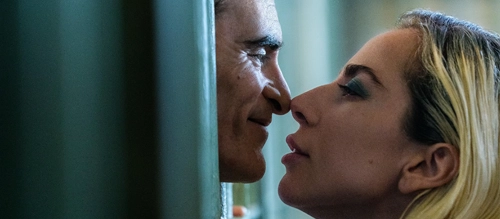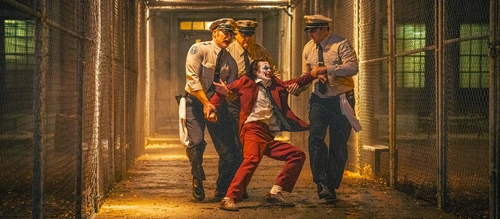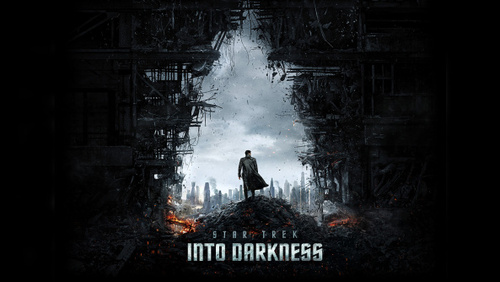
Joker: Folie à Deux (2024)
Director: Todd Phillips
Screenwriters: Scott Silver, Todd Phillips
Starring: Joaquin Phoenix, Lady Gaga, Brendan Gleeson, Harry Lawtey, Bill Smitrovich, Catherine Keener
The Cult of Joker was one of 2019’s most significant developments both within the art of cinema and the industry of theatrical exhibition. Awards bodies adjudged the film to be close to a masterpiece, and certainly a year-leading studio movie, with Joaquin Phoenix earning the Oscar for Leading Actor and Joker becoming the first R-rated (15) release to ever pass $1billion at the box office. Perhaps the most lasting impact of Joker was how it captured a rotten-to-the-core establishment and the people lost to society’s fringes during a time of civil unrest, a widening wealth gap, and incessant misinformation. Its message was distorted under the US Army’s campaign to discredit the film amidst concerns it would spark riotous anti-establishment behaviour – an act that birthed countless think pieces and ironically boosted the film’s reputation as an apparently against-the-studio, versus-the-system film that wasn’t to be missed – and perhaps lacked the obvious political perspective that many of the less-challenging studio films had made audiences accustomed to in the decades that preceded it, but Joker did speak a truth to many people. It was a film that captured enough of the then-now to mean something, but was ambiguous enough for us to imprint our own perspectives on it; an anarchic offering that could encapsulate anything from Defund the Police activists in the aftermath of George Floyd to the so-called Incel movement born of online message boards. It was regarded as important.
Coming after lockdowns, industry strikes, a studio merger, a change in US president, and the beginning of two troubling international conflicts, Joker: Folie à Deux enters a vastly different world. As a consequence of changes in intentions, and responsibilities to a number of voices that pull the film in different directions, time has not been kind. Joker 2 is the type of sequel that unravels that which you appreciate about the original and is a film lacking the imagination necessary to pull off its intended vision. Most painfully of all, it is incredibly boring.
A bold and creative prologue makes way for what is, at its core, a traditional prison and courtroom drama, only with a handful of largely pointless musical interludes. We are reintroduced to Joaquin Phoenix’s Arthur Fleck in the midst of his prison sentence, with Catherine Keener’s lawyer character seeking to help him out by getting him in front of a judge and claiming his actions from the first film were as a result of a split personality disorder. He is guarded by Brendan Gleeson’s physically imposing and quick-to-abuse Jackie Sullivan, and is eventually acquainted with Lady Gaga’s “Lee” during an arts class he’s taken to for “a good press opportunity”. With the support of she who seems his biggest fan, Fleck and Joker make an attempt to save their life, while the sinister up-start district attorney Harvey Dent (Harry Lawtey) attempts to get him executed. On paper it seems to have at least something that those in the studio can bring to life with the same vivre as in the original, but the reality is that Joker 2’s most interesting elements are integrated in a manner that is sub-par and everything else simply does its job… nothing excites, inspires, or lights the flame of imagination.
The momentum of the narrative in the 2019 Joker, the snowball effect of seeing more and more occur until a final eruption, was magnetic. In contrast, Joker: Folie à Deux has no momentum, so there is barely an inch of rage, or pride, or joy, or squirm, or sympathy, or whatever you may feel from any film worth the money it’s made with. Those involved were bold to select a musical as a means of communicating the next step in their story, and it was expected that these musical numbers would blend reality and imagination, but the musical elements here are forced into a by-the-numbers narrative and hold very little value to either the lives of the characters involved or the psyche of the titular Joker. These scenes kill momentum dead. As we seek a truth beyond these obvious fantasies, as we await shifts in tone and trajectory that simply never come, it becomes more and more obvious that the musical elements of this film are a waste of time. You find yourself searching for meaning that isn’t there, then abandoning hope only to sit through another two, three, four, or more, five-minute segments. Worse still, they’re not even constructed creatively, often looking like the negative consequence of a small crew or long-gestated reshoots, though neither has been confirmed.
It all comes as a bit of a shock because the main players from Joker 2019 are all here. Director Todd Phillips is back, and he’s co-writing with Scott Silver once again. Lawrence Sher returns to the role of director of photography, and the Oscar-winning Hildur Guðnadóttir re-establishes her bleak tone through music in her role as composer. Yet… this isn’t Joker. It’s not even close.

The film has the same colour palette as the original, effectively juxtaposing the bleakness of Arthur Fleck’s life with the colour of his Joker fantasies, but there is barely a memorable angle or movement in the entire film, and every scene – the majority of which are painstakingly set within the dull confines of a few imposing corridors – is lifeless and lacking the imagination Joker admirers may have come to expect. Similarly, Guðnadóttir’s score, which delicately sunk into scenes in the original film, seems aware of the heavy lifting it is being forced to do and as such has a much less graceful approach. There are moments in which the score warps around musical interludes with all the subtlety of a pre-ad key change in a typical weekly investigative drama. Director Todd Phillips gets genuinely impressive turns from Lady Gaga and Brendan Gleeson, and Joaquin Phoenix is typically outstanding even when the film gives us fewer ways to recognise the quality of his work, but the writing from Phillips and Scott Silver is beyond bland, at times frustrating, and often mind-numbingly formulaic. The biggest faux pas of all is that Silver and Phillips remove all the ambiguity from the first film.
Joker was at times frustrating in its lack of clarity, but it no doubt captured the imagination like few films of its era. Like its key source of inspiration, Martin Scorsese’s The King of Comedy (1982), it was a film that asked you first-and-foremost to identify with the journey of its central character and then try to work out what was real, what wasn’t, and why any of that mattered. By the end of Joker, not everything was tied up, but that only reinforced the myth of the in-universe character, which was exactly what the film was exploring. It was inventive, interesting filmmaking, and yet its sequel does everything in its power to explain every little detail – it’s the Solo: A Star Wars Story problem: nobody wants to know everything about Han Solo because his ambiguity is what makes him interesting.
It is here where suspected creative division rears its ugly head.
The narrative is simplistic, reductive even, and uses dialogue to explain a lot of what doesn’t need to be explained. It features a large number of story beats, especially when compared to the original film. This is likely a case of the studio wanting to guarantee they’re hitting well-researched points of investment for their prospective $1billion audience – take a look at any major studio film and you’ll see that expositional dialogue and story beats are more common than in any other type of high quality filmmaking. Working in opposition to this standardisation is director Todd Phillips, who is stretching the film through genre by incorporating the musical elements. These elements don’t effect the story because that would effect the studio, but they do offer Phillips the opportunity to explore something new from a filmmaking perspective. Finally, there is Joaquin Phoenix, whose career-long avoidance of sequels and his award-winning turn made him a major influence on the project. His impact is in the narrative and the ways he is stretched as a performer. Ultimately, it’s the studio that wins this battle – getting the by-the-numbers, executives-approved narrative, as well as a soundtrack to sell and possibly another awards season run for one of their actors – but it’s one that punctures the project overall, stretching it in so many directions it becomes distorted and lacking the clarity of the original. In one shockingly active attempt at excitement, the camera swivels from our subject to unnaturally frame a secondary character in what can only be understood as a reluctant inclusion courtesy of studio notes. It stands out from the rest of the film as a gratuitous moment.
Beyond all the analysis and the deep dives, there is one truth that remains: Joker: Folie à Deux is boring. It may have been stretched here, there and everywhere, and of course features some redeemable elements (such as the performances), but no matter how this film is intellectualised and evaluated, it will forever be less than Joker (2019). It will never be more than the sum of its parts, it will always fail to ignite the imagination and the passion of the musicals, the comic book movies, the psychological thrillers, the prison dramas and the courtroom dramas we’ve all come to know and love. Joker: Folie à Deux will be remembered as disappointing, if it is even remembered at all.
Score: 10/24
Recommended for you: Live-Action Jokers Ranked

